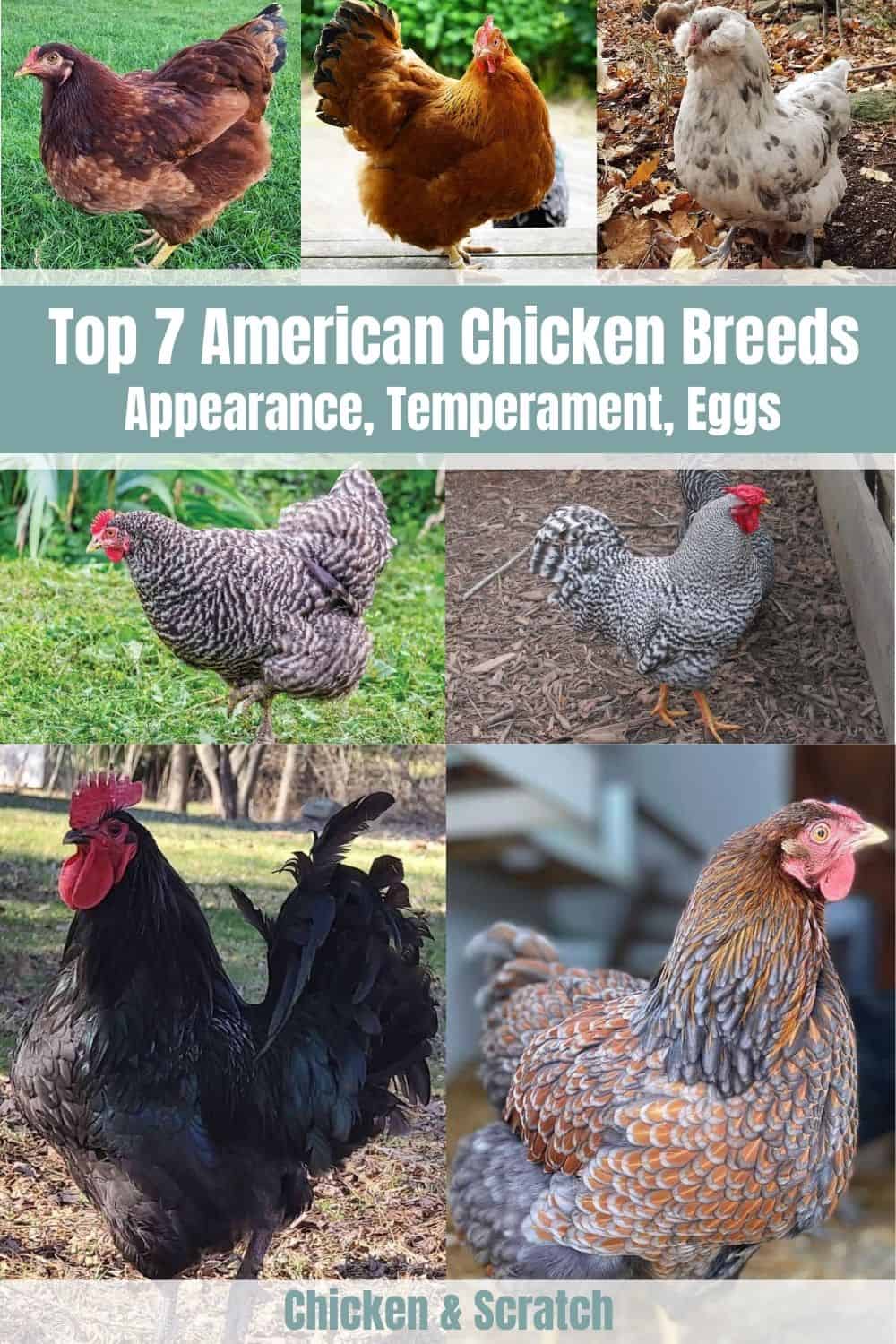Most people have completely relied on getting their poultry products from supermarts, farms, etc. While there’s nothing wrong with this, it’s more fun and economical if you raise chickens in your backyard, and it’s not a big deal.
The right knowledge and attitude will get you started and sustain you. You also need good chicken breeds and you can start with American breeds such as Buckeye, Brahma, New Hampshire, etc.
1. New Hampshire

Most American chicken breeds are dual-purpose chicken, and New Hampshire is no different. The New Hampshire was developed in Massachusetts and New Hampshire, all thanks to Professor Richardson, and has been used to create other breeds like the Delaware chicken.
However, it is often mistaken for the Rhode Island Red. Why? Both chickens have almost the same size, but a close inspection at New Hampshire reveals that it has a broader, triangular body with a different feather color.
Even though it did not achieve much success in the poultry industry, it established the foundation for broiler birds and was recognized as the official bird of New Hampshire in 2018.
You must have seen gorgeous chickens before, but New Hampshire stands out. With its black-spotted tail and neck feathers, single red comb, earlobes and wattles, reddish beak and orange-colored eyes, clean legs, and yellow toes, the New Hampshire struts about in the garden. The standard weight for roosters is 8 pounds and 6.5 pounds for hens, while the bantam versions weigh about 3 pounds for roosters and the hens, almost 2 pounds.
Balanced at the highest level of the pecking order, New Hampshires would push other chickens out of the way to get something to eat. However, they’re only aggressive when it comes to feeding. If you’ve been on the lookout for a bird that will entertain you and your family, you’ll find a good choice in the New Hampshire chicken.
If you’re about their eggs, they lay large, light-brown eggs so that you can expect about 200 eggs per year. As regards meat production, they quickly mature, and their carcass makes a good family dinner. They are cold-hardy and robust, which means no unnecessary financial strain. Ensure you subject them to regular health checks, as birds have sensitive systems.
2. Ameraucana

With a name similar to its place of origin, Ameraucana was developed from Araucana, a chicken breed that lays blue eggs, in the 1970s. In 1984, it was recognized by the American Poultry Association.
True to its origin, the Ameraucana chicken lays medium-sized, blue-shelled eggs all through the year. Under necessary conditions, you can collect at least 200 eggs from them. Concerning their personality, Ameraucanas are docile and curious.
They’re the chickens who will peck at everything they can find in your backyard (they’re great foragers) but avoid trouble at all costs. They love human interaction, so you should pay attention to them.
This rare chicken breed has about 8 varieties which include wheaten, black, blue, brown-red, silver, etc. Among other chicken breeds, they stand out such that they’re likely to win chicken competitions.
Sometimes, you won’t find wattles on both roosters and hens, but if you do, they’ll be red. Their bodies are u-shaped with upright tails, pea combs, and clean legs. Roosters weigh about 7 pounds, while hens weigh about 6 pounds. The bantams weigh less.
However, Ameraucanas aren’t to be confused with Easter Eggers, which are similar to them. The significant difference between both breeds is that the former lays only blue eggs while the latter lays both blue and green eggs.
Also, Ameraucanas are alert and protective. They mix well with other chicken breeds and are in the middle of the pecking order. Except they’re unsettled, you won’t find them making a noise. Their robust health system endows them with the ability to tolerate different temperatures and live up to 8 years.
However, you need to keep parasites away from them and provide them adequate food in addition to their foraging. They don’t do well with confinement, so you need to provide a big space for them.
3. Buckeye
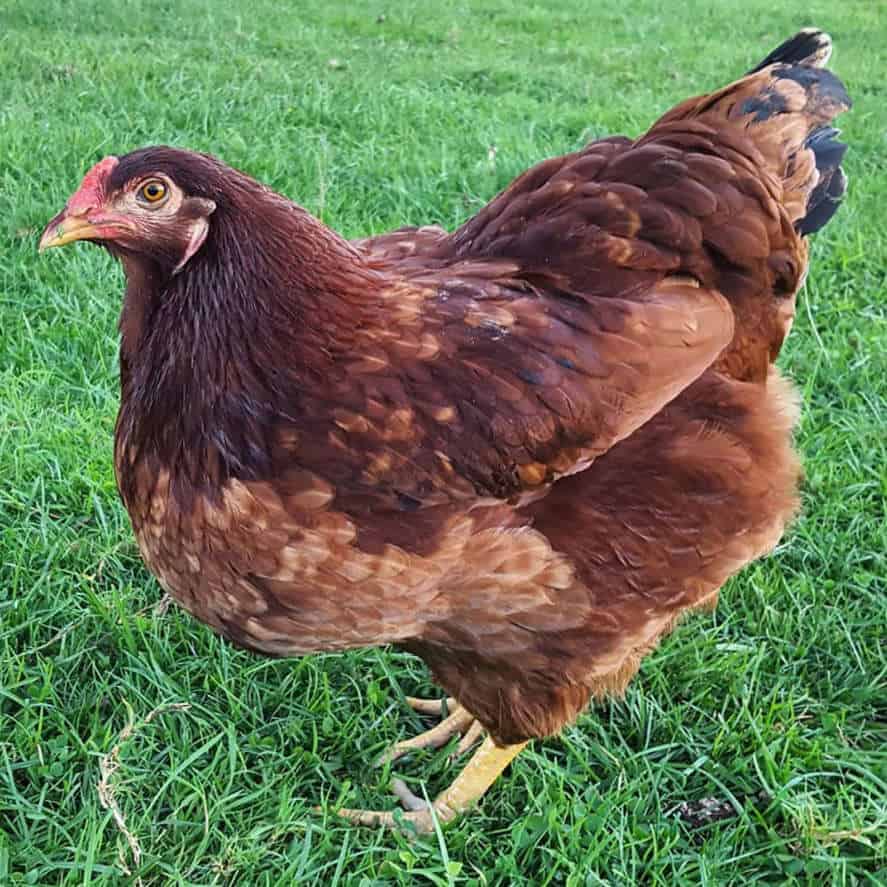
One of the concerns of many chicken owners is to find a dual-purpose breed that can tolerate different weather conditions, but this can be difficult. Not many breeds would be good for both egg and meat production, be cold-hardy and heat-tolerant, and free-range in nature, but the American Buckeye is.
As such, it is seen as an exceptional bird. It was developed from crossing the Red Game with Cochins on a farm in Warren, Ohio, in 1879 by Mrs. Metcalf. She wanted a breed that flourished no matter the conditions. She got what she wanted in the mahogany Buckeye. In 1902, the American Poultry Association admitted this chicken breed.
Identifying Buckeyes amidst other chicken breeds isn’t difficult. Their backs are broad and slanted with a firm breast, a pea comb, and thick thighs. You’ll get about 200 brown, large-sized eggs from each Buckeye chicken per year.
The hens are broody and make excellent mothers for the chicks. Buckeyes have meaty carcasses -the roosters weigh about 9 pounds while the hens, about 7 pounds. Their bantam versions don’t weigh more than 3 pounds. Both versions grow very fast.
In addition, they’re good mouse hunters. Some studies have likened their mouse-catching abilities to that of a cat. Want to keep rodents off your property? Raise Buckeyes in your backyard. They also enjoy human company and are extremely curious.
You’ll find them running after you whenever you enter their space. True to their origins, they love to free-range. As such, your backyard must be spacious enough to allow them to run as much as they want.
They have a strong health system, so you can rest assured they’ll survive both winter and heat. However, Buckeyes are on the Livestock Conservancy’s list of concerns, so raising them means you’re helping to preserve this rare bird.
4. Jersey Giant
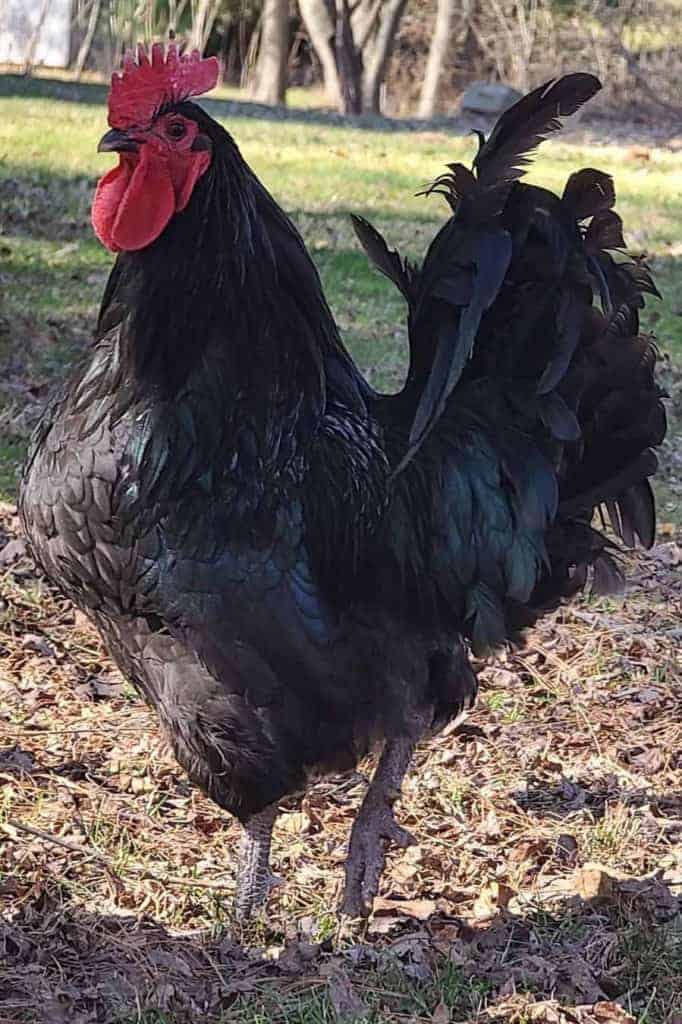
The Jersey Giant has many qualities that make it unforgettable. For instance, it weighs about 15 pounds for the roosters and 11 pounds for the hens. From its appearance, you can easily deduce it’s called the Jersey Giant, even if you’re seeing it for the first time.
It has a long, square-shaped body. As such, its eggs are huge too and take more than one day to hatch. It comes in three varieties – black, white, and blue, which the American Poultry Association recognized in 1922, 1947, and 2003. The Black Jersey Giant is always the heaviest of the trio.
Asides the kingly appearance and unusual egg production, the Jersey giant has one of the most likable personalities you can ever find in a chicken. Despite their size, it isn’t aggressive. It’s one of the few chicken breeds you’ll raise as a pet because of its gentle and peaceful nature.
Even though it’s at the top of the pecking order because of its size, it relates well with other chicken breeds. As such, you can mix Jersey Giants with other chickens in your flock. The hens rarely brood as they break the eggs when they sit on them.
You should also ensure their space is big enough to allow free-ranging and personal space. A Jersey Giant doesn’t want to be confined all through; they want to free-range. More space enables them to live their lives without stepping on one another’s toes. However, they spend the first 2 years of their lives maturing; this breed isn’t the type of chicken that grows very fast. But when they do, you’ll find them suitable for your purposes.
You might be wondering if these birds are robust like the others above. They are, but due to their size, they tend to have bone complications. Therefore, you have to place them on medications to ensure nothing goes wrong with them.
5. California Gray
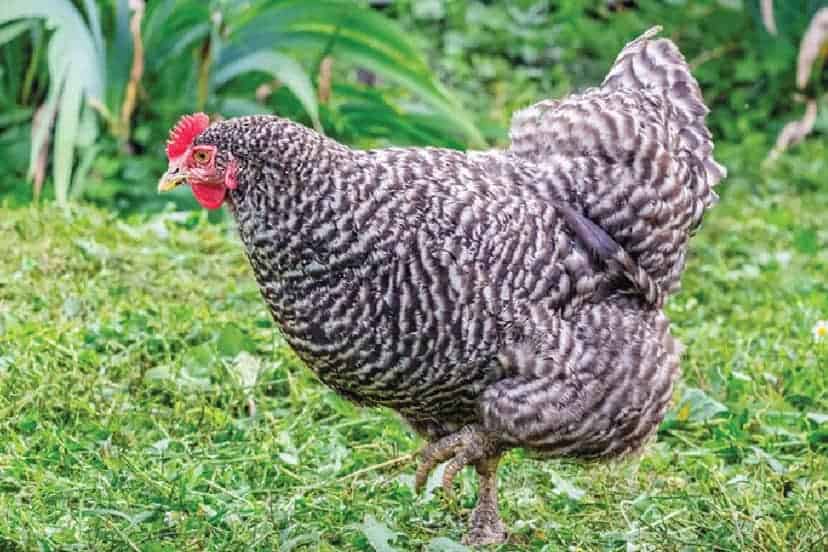
If you’re considering raising chickens for money, California Grays is one of the chicken breeds you should have in your flock. They meet the standards in terms of egg and meat production – laying up to 300 large, white eggs per year.
But first, how did this breed come to be? Studies show that in the 1930s, Horace Dryden crossed Barred Plymouths with White Leghorns because he wanted a chicken that would do well in producing both meat and eggs.
He got his result – the California Gray, which was named after California in America. Weighing 5.5 pounds for the roosters and 4.5 pounds for the hens with no bantam versions, it has a single red comb, red battles, and clean yellow-colored legs.
True to its origin, it has the best qualities of both the White Leghorns and Plymouth Rocks. The feathers are barred, and the hens have a darker color than the roosters. Even the chicks follow this pattern, so it’s easy to identify one gender from the other.
Concerning its personality, the California Gray chicken is neither noisy nor flighty. You don’t have to worry about your neighbors complaining that they are a nuisance. They’re friendly and will happily accept your hand of friendship. Although they’ve no problems with being confined; it’s risky for you to keep them in one place for long.
They need to free-range to exercise to maintain their bone health and prevent obesity. Obesity in chickens is a risk factor of sudden death syndrome, and you don’t want that for your chickens. Also, they do well in both hot and cold seasons but don’t expose them to extremes.
As their caretaker, you need to pay attention to them as much as possible. Abandon them for a while, and you’ll find them developing several health complications caused by internal and external parasites. Always ensure you do the barest minimum at least.
6. Dominique
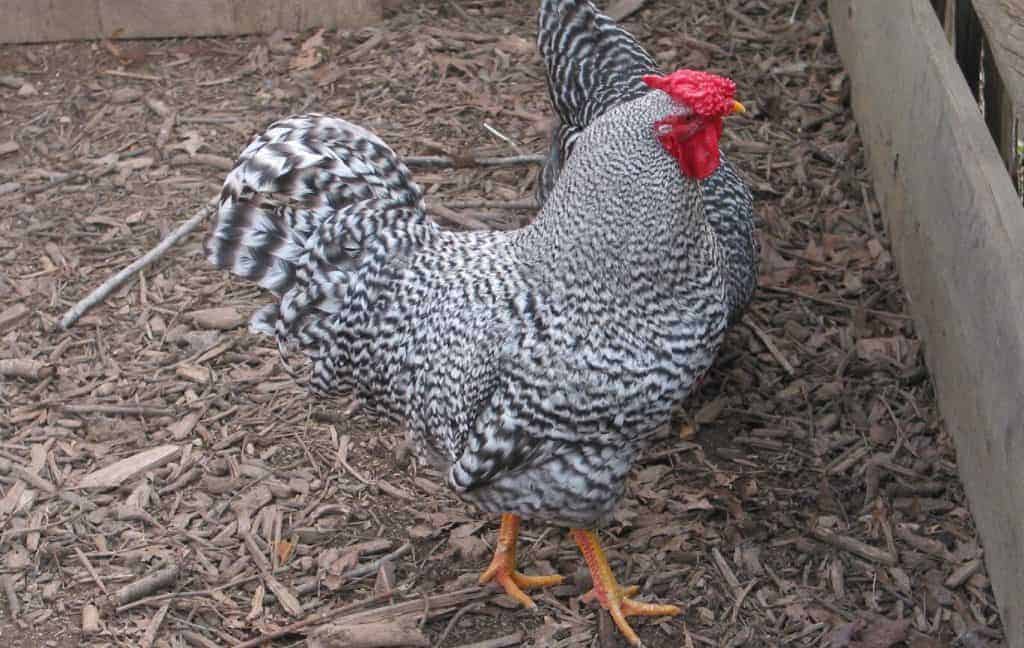
Dominiques might not be as popular as other chicken breeds, but they’re an excellent addition to your flock. Their history, temperament, and meat and egg production make them a good chicken breed for homesteaders.
Also called the Dominiker or Pilgrim Fowl, Dominiques are black-and-white barred chickens. If you’re asking yourself why they are called Pilgrim Fowls, here’s your answer: many breeders believe that they were developed from breeds native to the island of San Domingo before they appeared in America in the 1870s.
This chicken breed has red wattles, combs, and earlobes with clean and featherless yellow-skinned legs, rose combs, and a jagged black and white pattern. As such, they do well in either cold or hot climates – you can rest assured their combs won’t get frostbitten.
The roosters weigh about 7 pounds while the hens, 5 pounds. The bantams are usually not more than 3 pounds. However, don’t mistake them with Plymouths with a more pronounced barred color pattern and large combs.
Also interesting is that the Dominique chicken breed is an answer to every breeder’s prayer – they’re low-maintenance birds. Since they love to forage, they get most of their food from the grubs and other things they dig in your backyard. This further means they hate being cramped up like sardines in a corner, so your backyard should be spacious.
Now, Dominiques are one of the friendliest chicken breeds you’ll ever raise. They’re docile and warm up to humans naturally. You’ll find them running after you upon your appearance. Little ones are perfectly safe with them, and other chicken breeds won’t suffer because Dominiques are in your flock.
They lay about 4 medium-sized, brown eggs per week, getting bigger as the hen matures. Their meat carcasses are robust, too, making them dual-purpose chickens. There are no health problems for Dominiques, but they shouldn’t be neglected.
7. Wyandottes
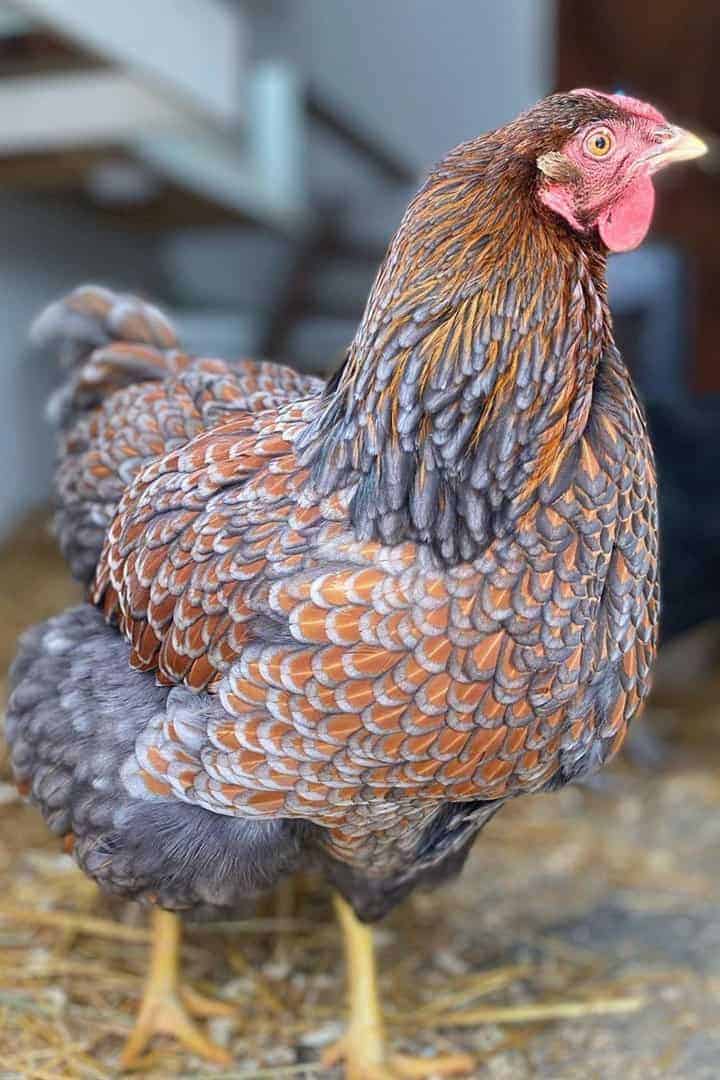
You’ll probably find a Wyandotte in almost every hatchery you visit, but their commonness shouldn’t be mistaken for ordinariness. Wyandottes aren’t ordinary chicken breeds. Is it their beautiful plumage that makes them much to be desired or their compartment? Believed to have been developed from crossing Brahmas, Hamburgs, and other chicken breeds, Wyandottes are considered a true American chicken breed. The American Poultry Association recognizes about 9 varieties which include Buff, Columbian, Black, Patridge, Silver, Blue, etc.
With red wattles, earlobes, rose combs, clean legs, and yellow skins, Wyandottes are heavily feathered. They have short heads and large bodies – the hens weigh about 7 pounds while the roosters about 9 pounds.
However, they don’t grow as quickly as other birds. The minimum age for egg-laying is about 5 months old. Their egg color is light brown or cream, and they’re quite big. They lay about 200 eggs in a year.
Even though they aren’t naturally broody, they make good mothers when they want to. As mentioned earlier, they have a good compartment. They don’t make a noise, except when making egg songs. Warm, cool and easygoing are words that best describe them.
Despite their big size, they aren’t aggressive towards children and get along well with other chicken breeds. However, they love to be with their kind; you won’t find them moving with chickens from different breeds. They don’t want to be picked upon also; they’re quick to fight back their bullies.
Healthwise, Wyandottes have no illnesses. To maintain their health, you need to allow them free-range in your backyard. The more they exercise, the stronger their bones.
Ensure their run is spacious enough to contain all their activities and sturdy enough to protect them from predators. Just like Dominiques, Wyandottes are low-maintenance birds too. All they need to thrive are essentials such as food and water.
Summary
Either you’re a first-time homesteader or have been at it for a while; you should consider raising American chicken breeds. They are dual-purpose, which means no loss for you at all, and low-maintenance (little resources are enough to raise a flock). Besides, the friendliness of some of these breeds will entertain you to no end.
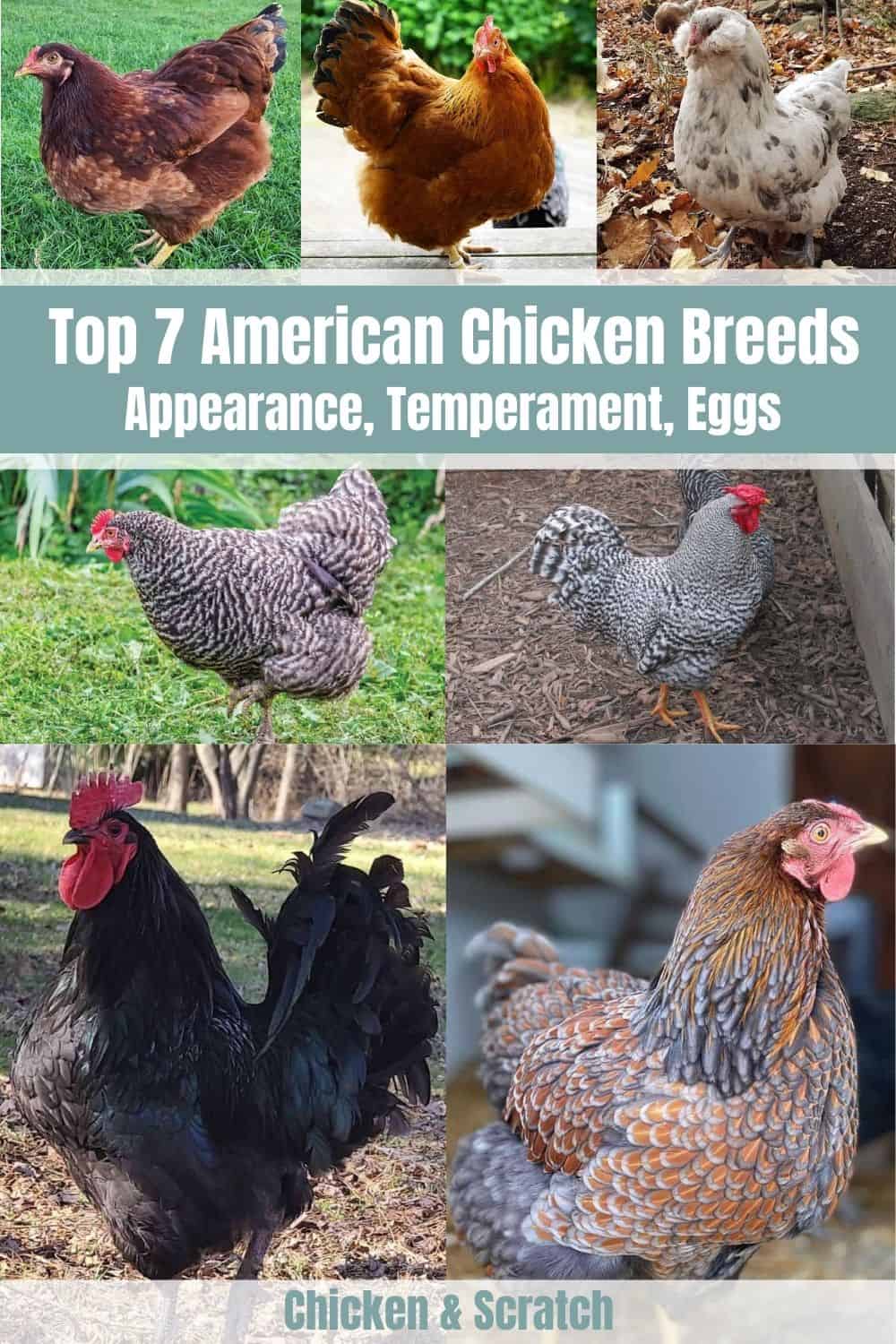

Joseph Hudson has been raising chickens for over 15 years. In 2018, he completed the Agriculture & Natural Resources program at Mt. San Antonio College. He currently raises over 1400 chickens on his 7.5-hectare farm. He keeps sharing his experience on raising healthy and happy chickens on Chicken Scratch The Foundry.
